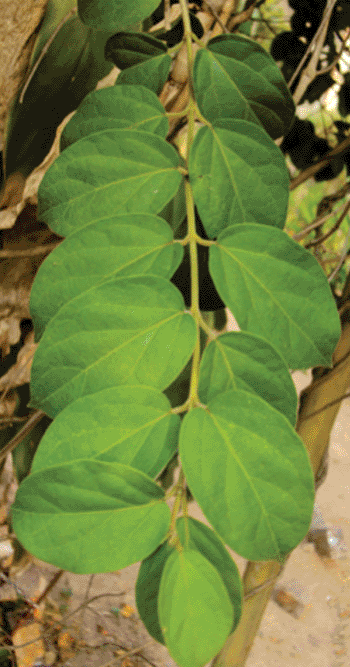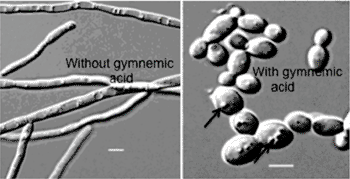Gymnemic Acids Stabilize the Yeast Form of Candida albicans and Enhance Action of Antifungal Drugs
By LabMedica International staff writers
Posted on 24 Sep 2013
Small molecules isolated and purified from leaves of the ancient medicinal plant Gymnema sylvestre inhibit yeast-to-hypha conversion and hyphal growth in the fungus Candida albicans, which greatly enhances the effect of antifungal drug treatments.Posted on 24 Sep 2013
Candida albicans is a diploid fungus that grows both as yeast and filamentous cells and is a causal agent of opportunistic oral and genital infections in humans. Systemic fungal infections, including those by C. albicans, have emerged as important causes of morbidity and mortality in immunocompromised patients. Furthermore, C. albicans biofilms may form on the surface of implantable medical devices, while hospital-acquired infections by C. albicans have become a cause of major health concerns.
Investigators at Kansas State University (Manhattan, USA) isolated and purified gymnemic acids (GAs) from Gymnema sylvestre. They reported in the September 11, 2013, online edition of the journal PLOS ONE that purified GAs had no effect on the growth and viability of C. albicans yeast cells but inhibited its yeast-to-hypha conversion under several hypha-inducing conditions, including the presence of serum. Moreover, GAs promoted the conversion of C. albicans hyphae into yeast cells under hypha inducing conditions. In a model system, GAs inhibited the formation of invasive hyphae from C. albicans-infected Caenorhabditis elegans worms and rescued the worms from being killed by the fungus.
In addition to their effects on C. albicans, GAs also inhibited conidial germination and hyphal growth of another fungus, Aspergillus.
"We have shown that this compound is safe to use because it does not hurt our body cells, yet it blocks the virulence of this fungus under in vitro conditions," said senior author Dr. Govindsamy Vediyappan, assistant professor of biology at Kansas State University. "Taking the medicine could potentially help patients control the invasive growth of the fungus."
C. albicans also makes a biofilm that can be difficult to treat. The investigators found that the gymnemic acid compounds converted the biofilm back to treatable yeast cells.
"This compound prevents the biofilm formation because hyphae are the major builders of biofilms and biofilms are resistant to antifungals," said Dr. Vediyappan. "Yeast cells by themselves cannot make biofilms and are sensitive to antifungal treatments."
Related Links:
Kansas State University















